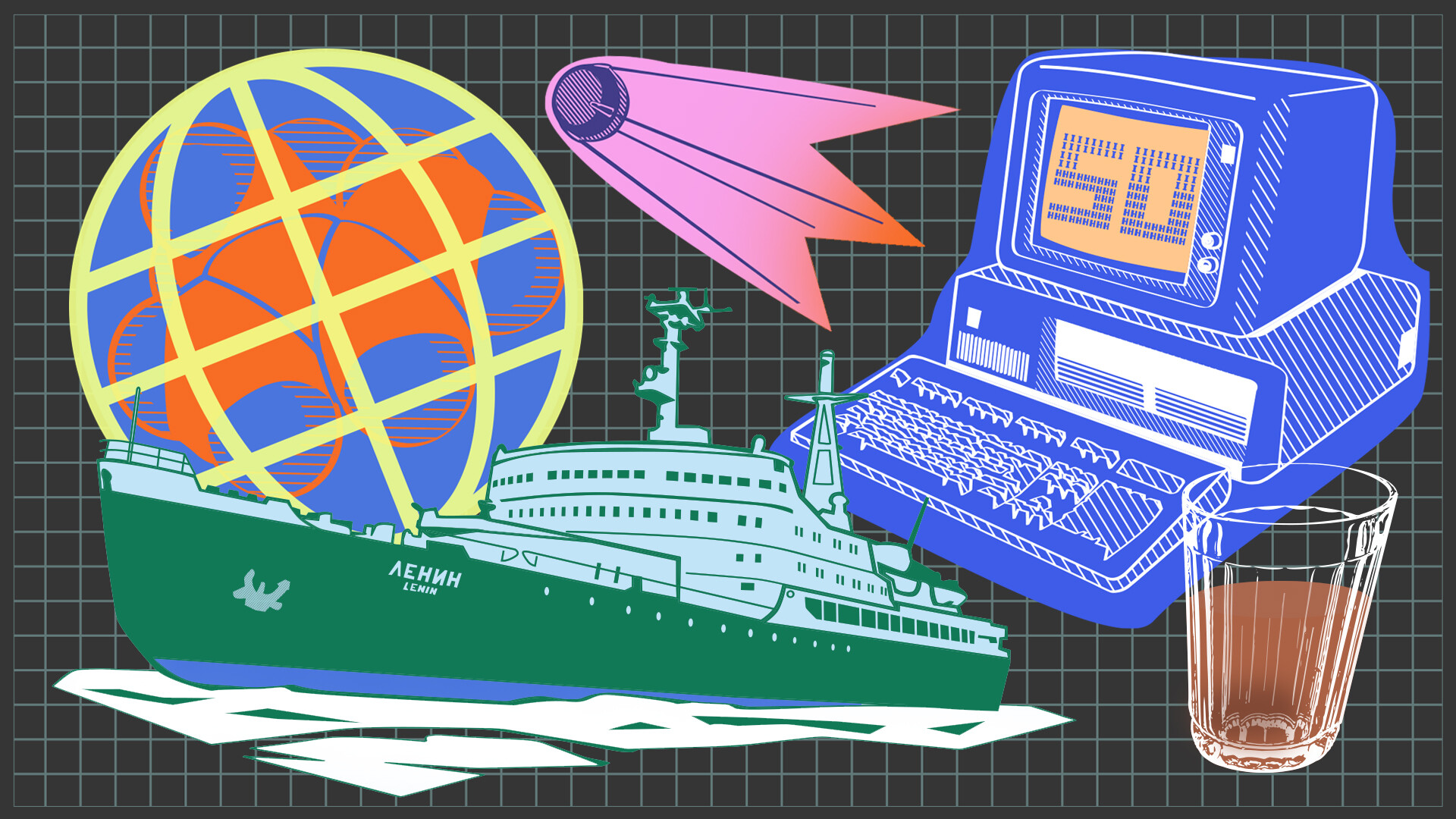

These days, it’s no big deal to chat with friends on almost any social network. And, in 1998, the invention of ABBYY founder David Yang practically opened up a new world. He invented the ‘Cybiko’ handheld computer, which you could play and communicate on - something in between Facebook, Tinder and Whatsapp. It had its own operating system and applications and, together, these devices could form a dynamic network. Within a few months, 250,000 such gadgets were sold in the United States.
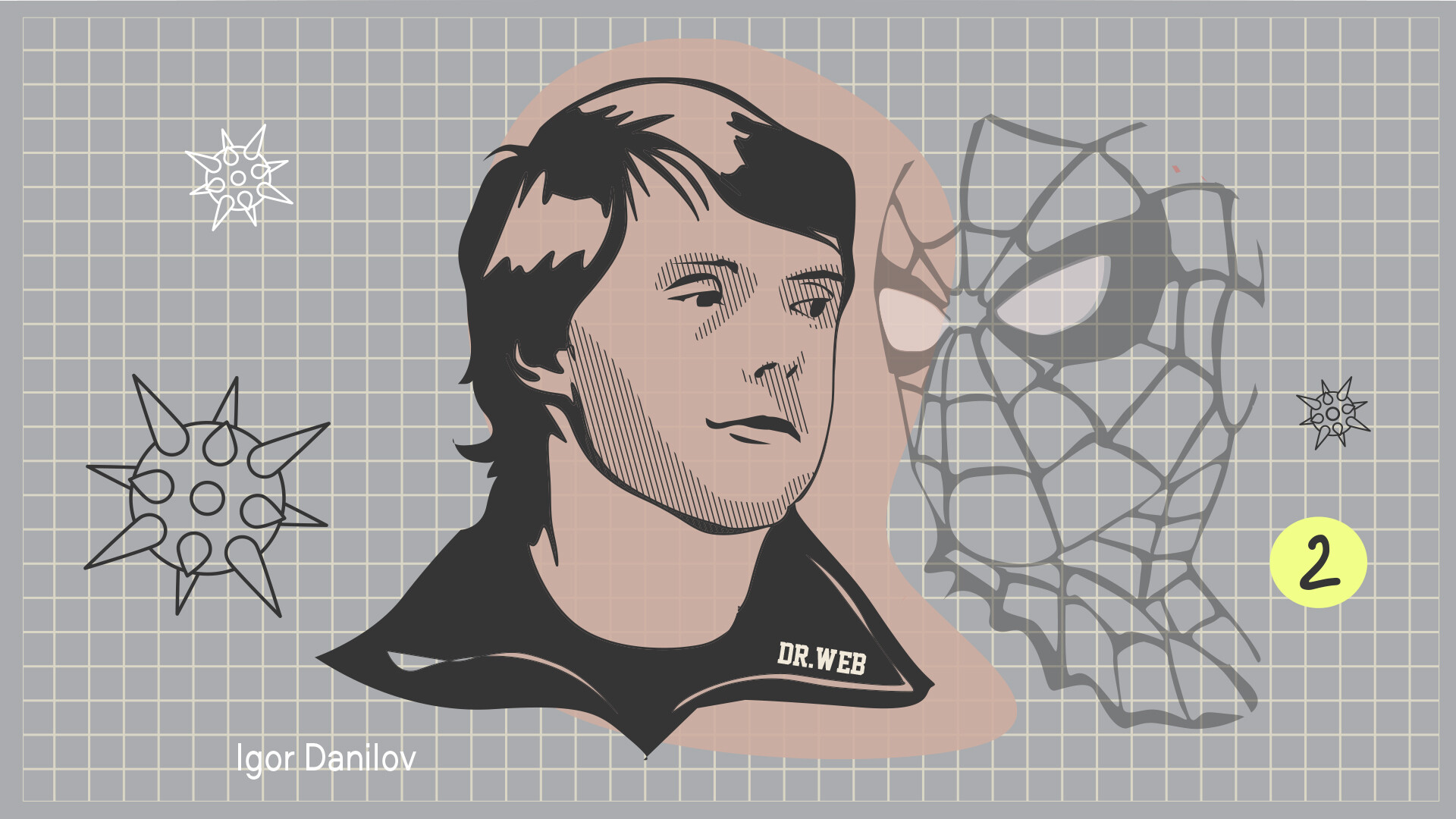
Antivirus programs are on almost every gadget today. But back in the early 1990s, encountering malware was a serious threat to computers. In 1993, Igor Danilov of the Leninets Research and Production Association created ‘Dr. Web’, the first program ever to not only detect, but also eliminate a polymorphic virus which, when it infected a file, encrypted its code. In 1996, the Russian antivirus detected 100 percent of such viruses during a comparative test. Its heuristic analyzer, which identifies dangerous programs that are yet unknown to the antivirus, successfully detected the “virus”.
In 1984, programmer Alexey Pazhitnov tried to transfer the ‘tetromino’ puzzle to the computer. The puzzle was improved and programmed for the ‘Electronica-60’ computer. At first, ‘Tetris’ looked very primitive: the pieces consisted of text characters like brackets and dashes. A little later, a young programmer named Vadim Gerasimov rewrote the game for IBM computers in the familiar form. ‘Tetris’, which went around on 5.0 floppy disks, became a hit among computer people in the USSR, and soon became known to the rest of the world. To this day, ‘Tetris’ and its clones can be found on every gadget.
A person suffering from glaucoma has increased intraocular pressure, resulting in decreased visual acuity. The outlook is bleak - potential blindness. An innovative method of treating this problem was invented by ophthalmologist Svyatoslav Fyodorov. In 1973, he performed an operation during which he created a way for the outflow of the intraocular fluid. After a non-penetrating deep sclerectomy, the pressure gradually returns to normal and the impact on the eye nerve decreases. Today, the Fyodorov method is used all over the world, it is still considered one of the most non-traumatic and effective in the treatment of glaucoma.
In 1968, engineer Arseny Gorokhov patented a blueprint programming device. It contained a keyboard, a system unit and a monitor. Alas, the intellectual was never given the attention it deserved: the research institute where Gorokhov worked said that his design was too simple to exist in reality. The author himself said that he, nevertheless, received feedback on his patent: in the form of satisfaction and a 50 ruble bonus. And, yet, this “too simple idea” has now become commonplace several decades later, because almost everyone has a computer.
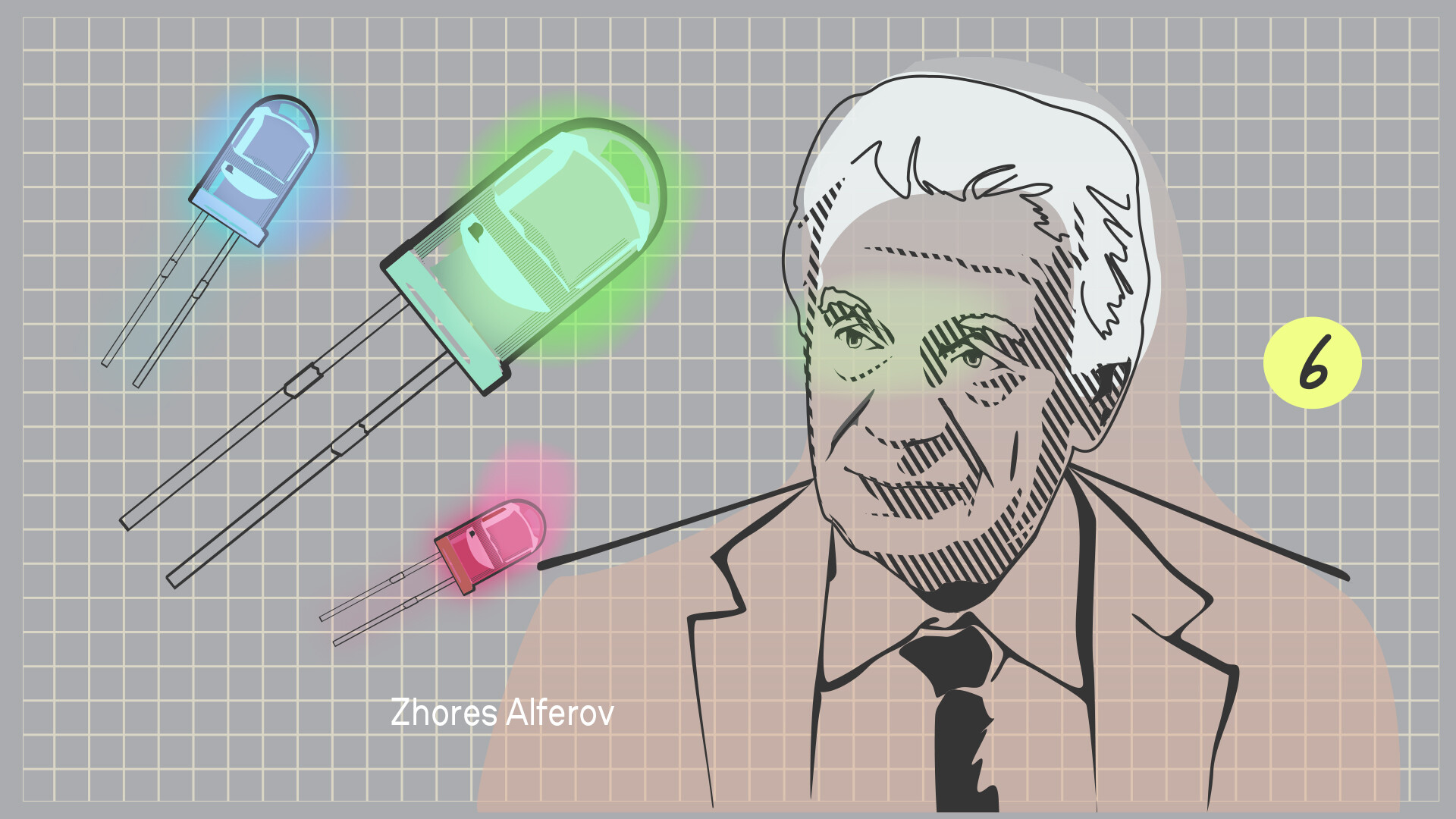
Natural radiation consists of different waves, each with its own frequency and phase. To ensure its uniform flow, special structures of several semiconductor materials with different conductivities and band gap widths were created. Zhores Alferov and his American colleague Herbert Kremer worked independently on their creation. In 1968, the Soviet scientists succeeded in creating a semiconductor heterostructure laser that could operate continuously at room temperature. They both won the Nobel Prize in Physics in 2000. Today, when talking on the phone or watching a DVD, we use Alferov’s invention.
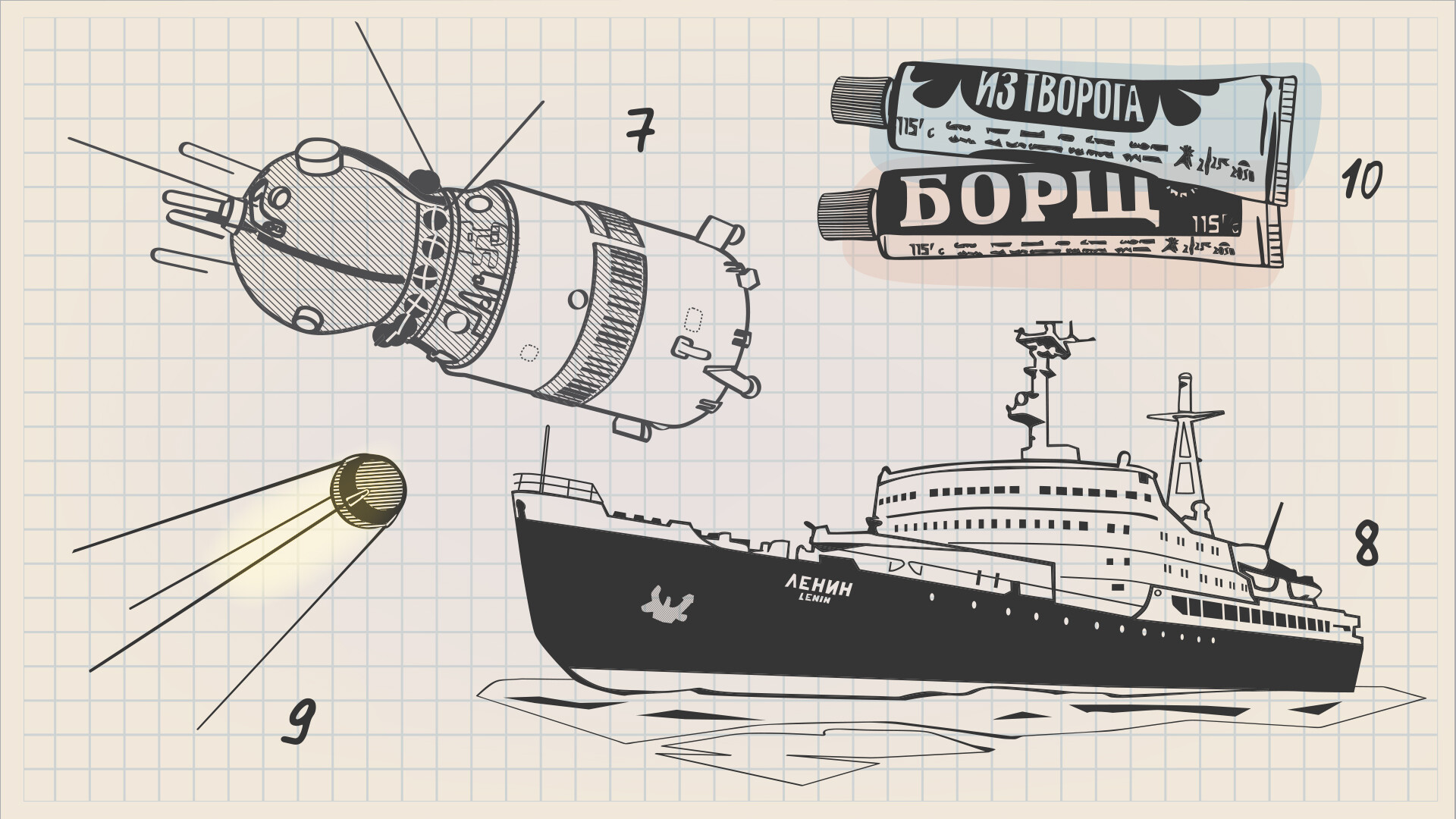
In 1961, the first manned spaceship was Gagarin’s ‘Vostok 1’. According to the plan, the flight should have been fully automatic. But the cosmonaut had instruments at his disposal, which allowed switching to manual control - after opening an envelope with a digital code inside. In fact, manned space is still a rather relative concept. Unlike “earthly” pilots, cosmonauts, although monitoring the flight and condition of the spacecraft, intervene only if necessary, such as manual docking, orbit correction or landing, as on the American Space Shuttle.
The development of nuclear power in the 1950s made it possible to build an icebreaker that could carry a caravan of ships along the Northern Sea Route for the entire navigation season without refueling. At the time of its foundation, the icebreaker ‘Lenin’ was the first civilian nuclear-powered vessel in the world. It was put into operation in 1959 and, during the first years, it led several hundred vessels through the ice. It was only in 1989 that the ‘Lenin’ was permanently anchored in Murmansk.
The code name of the first artificial Earth satellite was PS-1 - ‘Basic Sputnik-1’. The sphere with antennas, however, was a full-fledged scientific instrument. It investigated the passage of radio waves through the ionosphere, determined the density of the upper layers of the atmosphere during braking and tested the conditions of the equipment during orbital insertion and in space. Developed by a group of Soviet scientists (led by Sergei Korolev and Mikhail Tikhonravov) and put into orbit on October 4, 1957, the device was taken in the simplest sense: humanity had finally stepped into space.
The first experiment with space food was conducted during Laika the dog’s flight in 1957. An automatic wet food feeder was provided for her. During the flights of Yuri Gagarin and German Titov, food requirements were also investigated. Their meals were sealed in tubes and airtight bags. Flying crumbs and drips could simply have been too dangerous. It turned out that even with relatively low energy consumption in weightlessness, at least 2,800 calories per day were required.
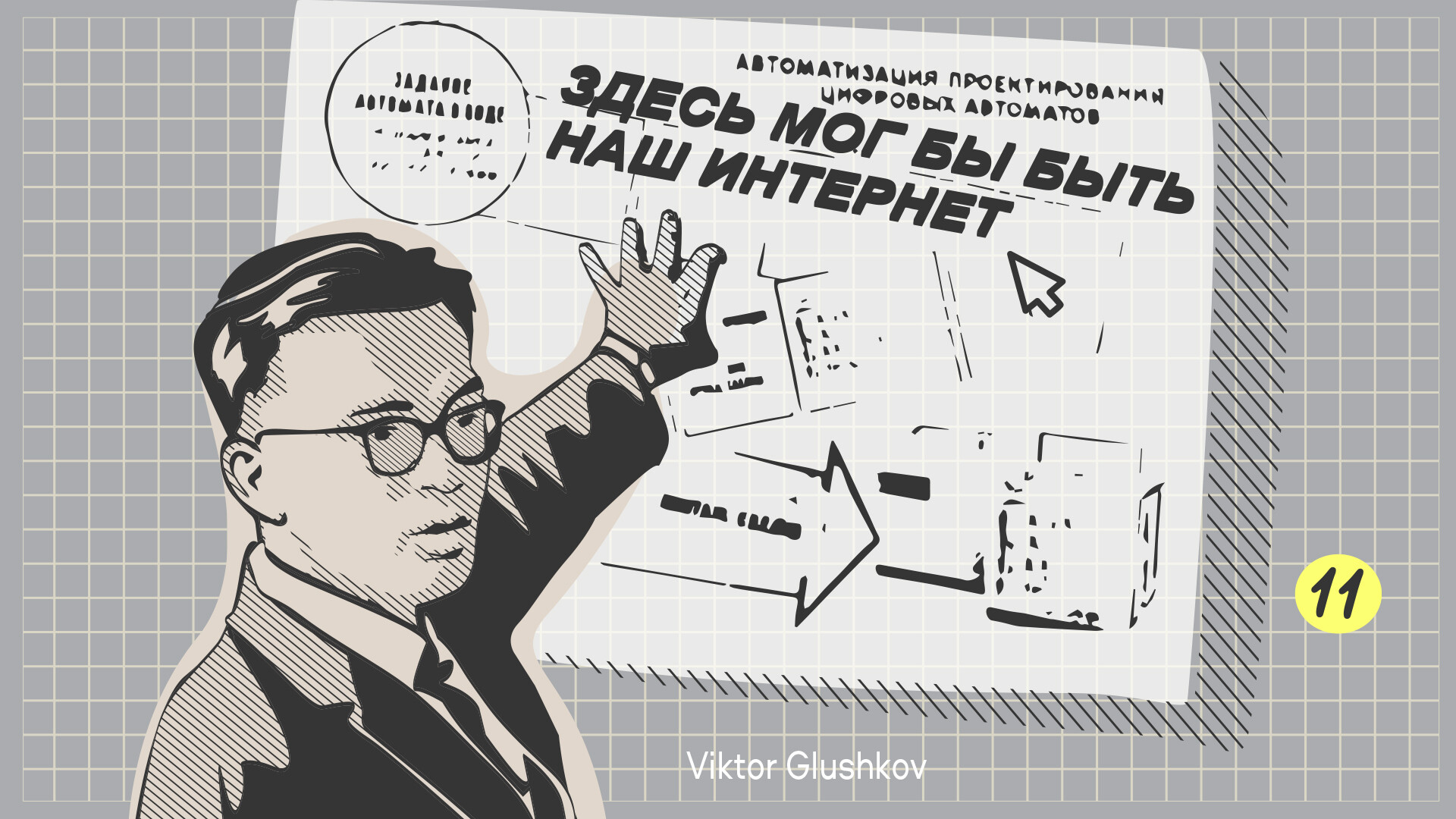
In the technology race, the USSR could have overtaken the U.S. decades ago. In 1959, 10 years before the first communication between computer servers was transmitted in the U.S., military cybernetic engineer Anatoly Kitov created a project to create a unified network of computer centers. In fact, he proposed an Internet model: machines were supposed to manage the Soviet economy, without any paperwork, remotely. But this and the idea of a similar network, which was proposed in 1962 by the cyberneticist Viktor Glushkov, were not appreciated. And the real Internet came to post-Soviet Russia from abroad.
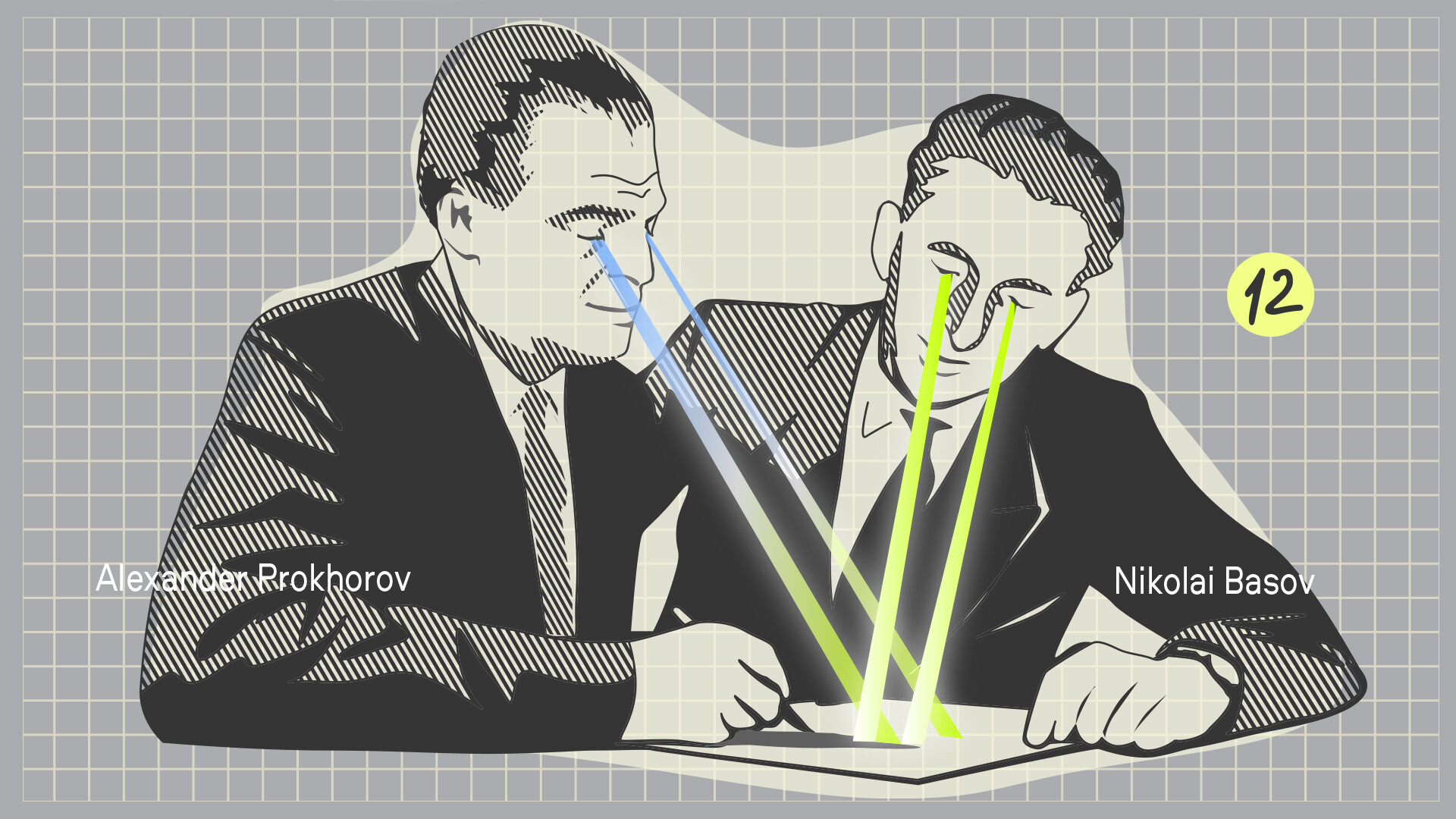
Albert Einstein predicted the laser principle as early as the beginning of the 20th century. But, it was Soviet scientists who first realized it. In 1939, physicist Valentin Fabrikant assumed that it was possible to achieve permanent electromagnetic radiation and create a directed beam of light. His work was continued by Alexander Prokhorov and Nikolai Basov: they succeeded in creating the world’s first generator of permanent electromagnetic waves. As ammonia molecules passed through the beam, a steady beam emerged. In 1964, Soviet scientists received the Nobel Prize for this achievement. Along with them, the American physicist Charles Townes, who conducted similar independent research, also became a laureate.
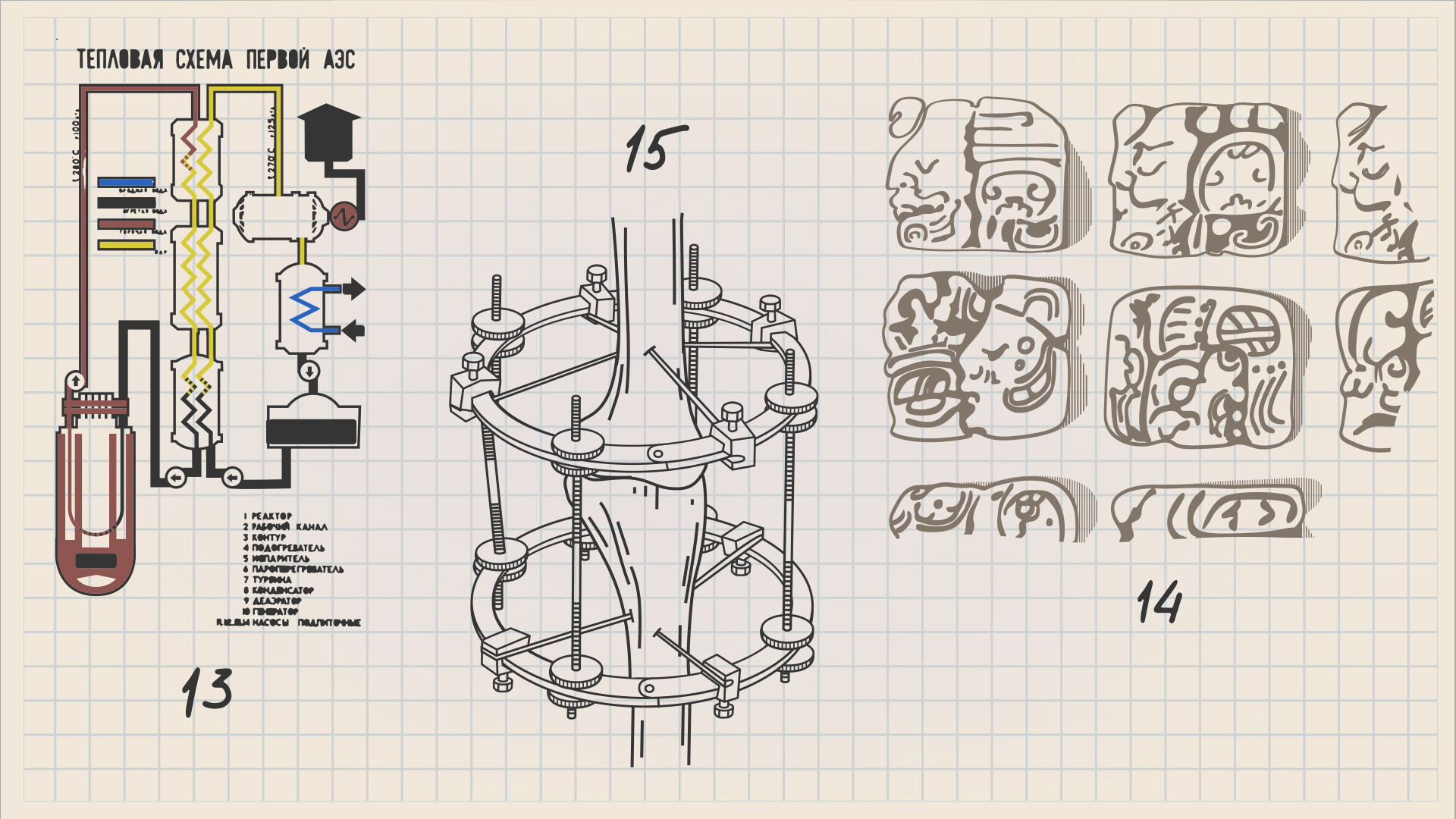
The idea that atomic fission energy can be used for peaceful purposes was realized by scientists during the development of the atomic bomb and with the development of the production of enriched uranium. Academician Petr Kapitsa’s idea, introduced in 1945, was taken up by Igor Kurchatov. The first nuclear power plant in Obninsk was launched in June, 1954. The reactor, fueled with enriched uranium, was powered by a steam turbine and a generator generating five megawatts of electricity. Its principle of operation proved to be so successful that it was later mostly repeated, with technical improvements, in subsequent NPPs. The Obninsk NPP has since operated for 48 years without accidents.
Historian and linguist Yuri Knorozov, interested in the Mayan language, decided to decipher it. The task was nearly impossible: there were no translated texts that would have helped him to understand what the hieroglyphs meant. For this purpose, Knorozov used the alphabet of 29 hieroglyphs, written in the 16th century by the monk Diego de Landa and determined that each symbol corresponded to a syllable. With this, he was able to translate extant manuscripts. The historian presented the first results in 1952. Later, Knorozov’s method of deciphering ancient systems of texts made it possible to understand other writing systems as well.
Orthopedists call Gavriil Ilizarov’s method the “wheel” that launched the modern development of this field of medicine. In 1951, a doctor from the Kurgan Regional Hospital proposed a method of bone fusion and lengthening - a structure consisting of several rings and tie rods, which was put on the limb with spokes then passed through in crossed directions. The first patient was on her feet in a week. The Ilizarov apparatus helped to lengthen limbs in the same way: bone tissue grew as the rings were pushed apart. Since the 1980s, this method has also been used abroad.
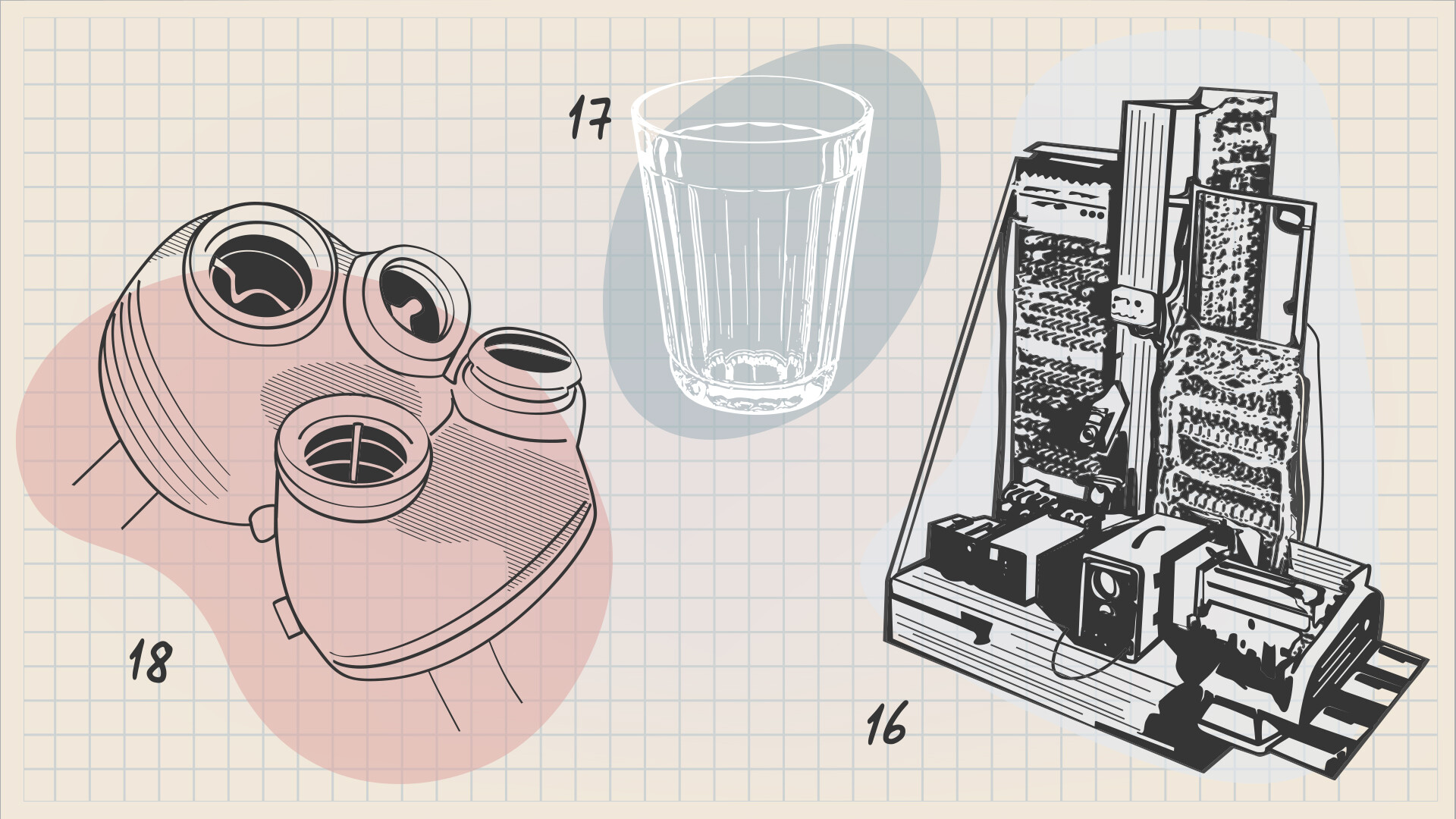
The patent for an automatic numerical computer, issued in December 1948 to Corresponding Member of the Academy of Sciences Isaak Bruk and engineer Bashir Rameyev, was one of the most important events in the era of computers. The Soviet engineers’ invention used the binary system. Their machine - almost simultaneously with the British EDSAC - became one of the first modern computers, where the program was stored in onboard memory. In addition, it used a binary calculation system. In 1952, the first Soviet computer began operation, six months ahead of the American EDVAC.
The production of Soviet cut glasses began on September 11, 1943. It is believed that Vera Mukhina, the artist behind the ‘The Worker and the Collective Farm Girl’, was among the developers. The facets gave the tempered glass extra strength and made it easier to place such dishes in washing machines. The number of facets could vary from 10 to 20. The “classic” sample is considered to be a glass with 16 facets. It was convenient to count the capacity - the part with faces was 200 grams, under the edge with a round rim - 250 grams. The glass became one of the most successful examples of Soviet industrial design.
Replacing the heart with a man-made device was one of the most difficult tasks in medicine. In 1937, Vladimir Demikhov, still a third-year student, created the world’s first artificial heart. A compact pump with valves and an electric motor made it possible to maintain blood circulation. With its help, he managed to keep a test dog alive for more than two hours. Demikhov published the world’s first thematic monograph, ‘Transplantation of vital organs in experiment’. The apparatuses invented later enable patients to live until a donor heart is transplanted.
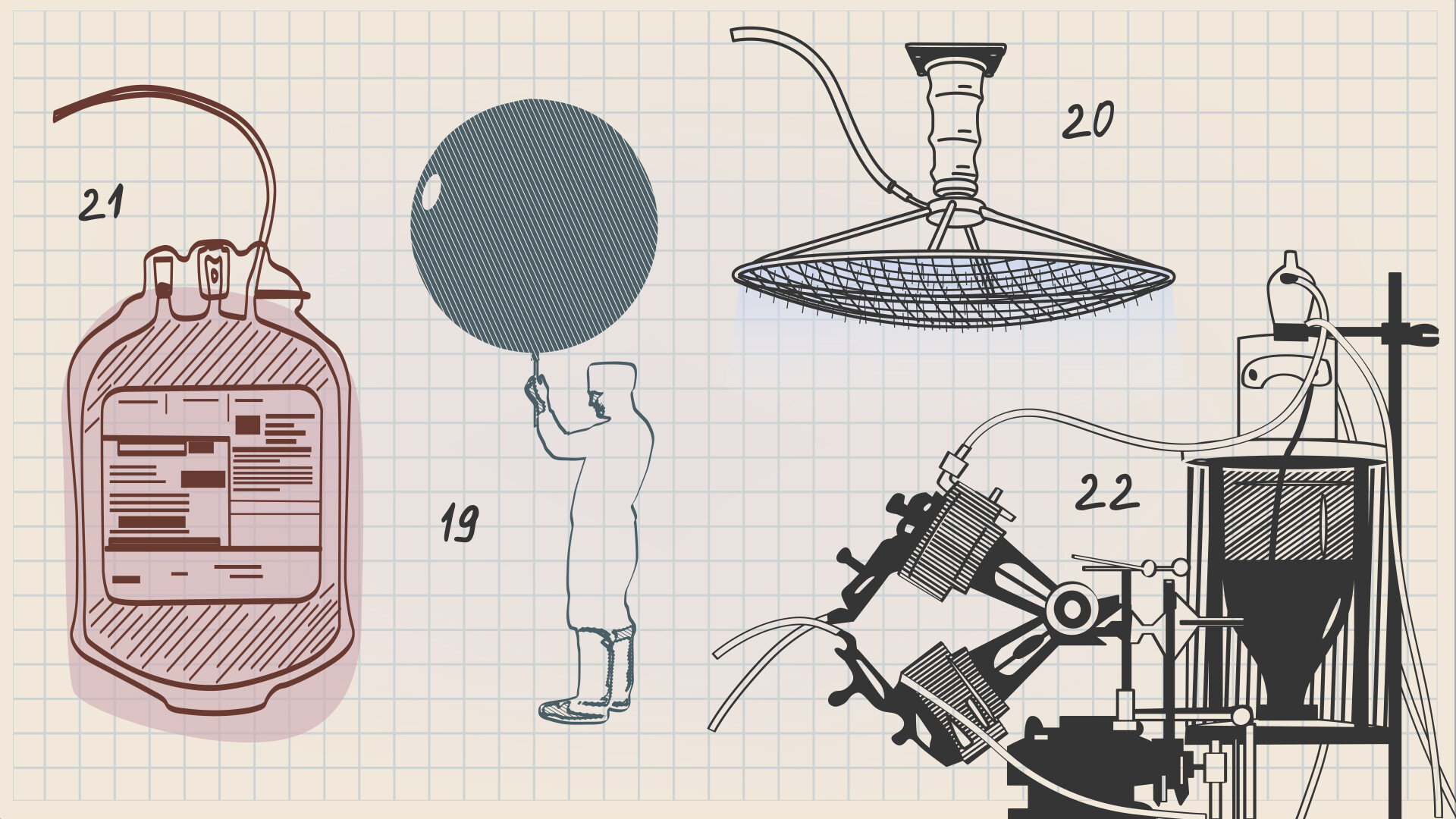
January 1930 saw the first launch of Pavel Molchanov’s invention to collect data on the atmosphere. A balloon filled with hydrogen carried a short-wave radio apparatus. Its signals were fed to special toothed combs with arrows. As soon as an arrow moved from one cog to another, the signal changed. At the same time, a similar model was invented in France. Modern radiosondes can reach heights of up to 50 km, transmitting data on pressure, relative humidity, wind speed and direction. They help not only meteorologists, but are also used in aviation, energy, agriculture, and GLONASS systems.
In 1903, physicist Alexei Sokolov suggested that ions affect human health and air saturated with them can have a therapeutic effect. Then, biophysicist Alexander Chizhevsky invented a way to “revive” the air indoors, conducting his first experiments in 1927. His emitter of negative aerions resembled a netted chandelier with many sharpened needles, connected to the negative pole of a high voltage source. When the chandelier is turned on, it releases electrons that attach to oxygen molecules. So the air in the room becomes fresh. Nowadays ionizers fit into small boxes.
In 1865, Vasily Sutugin, a physician, thought that blood could be preserved by removing the protein fibrin, which would prevent clotting. This idea was further developed in the 20th century. In 1926, the Institute of Blood Transfusion was opened in Moscow. It dealt with blood procurement, creation of sera and exchange transfusions. In 1932, the first in the world blood bank was opened in St. Petersburg, which dealt with blood collection from donors and its storage. At the same time, doctors Antonin Filatov and Nikolai Kartashevsky suggested dividing canned blood into plasma and red blood cells, which continues to save many lives every day.
A device that temporarily performs the functions of the lungs and heart was invented in 1926 by physiologists Sergei Bryukhonenko and Sergei Chechulin. In the first models of the auto-jet pump, blood was pumped by two mechanical pumps with valves. In 1937, Vsevolod Yankovsky invented the oxygenator: it saturated blood with oxygen and removed carbon dioxide from it. The devices were combined into an “artificial heart-lung”. At the same time, the American scientist John Gibbon developed a similar device. Soviet scientists were the first to invent a similar device and suggested its use in cardiac surgery, but, in the U.S., it was put into practice several years earlier.
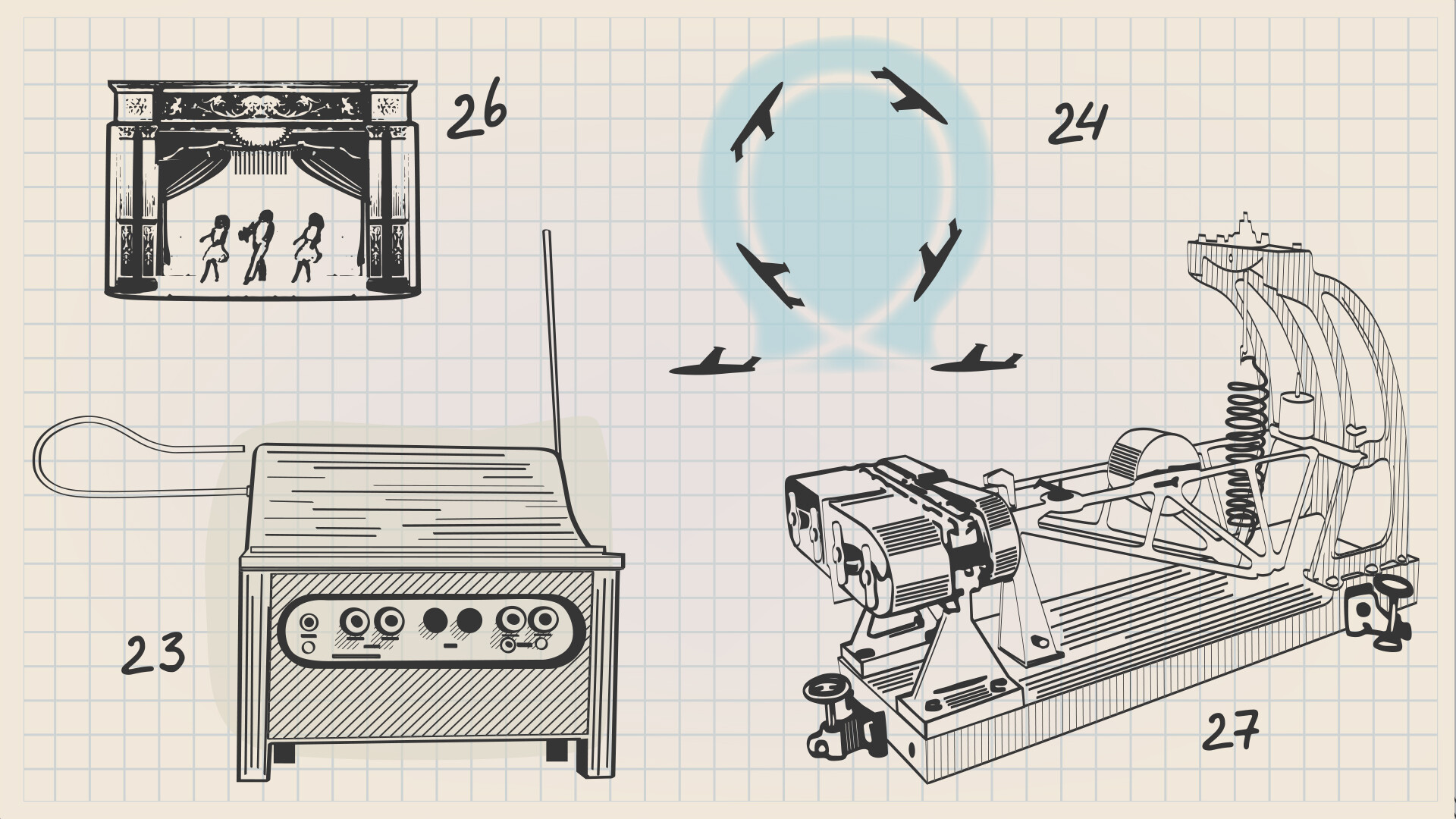
The first electronic instrument was developed by inventor-physicist and musician Lev Termen in 1920. By moving the performer’s hands in the electromagnetic field formed by two antennas, the frequency and volume of the sound could be changed. The timbre of the termenvox is somewhat reminiscent of a soft human voice. By adjusting the settings, it is possible to give the sound a variety of different tones. After Lev Termen’s concerts, entire schools of playing the thermo-vox emerged abroad in the 1930s. In recent decades, the instrument has experienced something of a renaissance.
The first aerobatic maneuver was performed by Pyotr Nesterov in 1913. Using the Nieuport IV plane, he performed a “dead loop” - a closed turn in the vertical plane. This maneuver got its name, due to the fact that attempts to perform it often ended in the destruction of the plane and the subsequent death of the pilot. Nesterov’s calculations were more accurate and the term ‘Nesterov loop’ came into use.
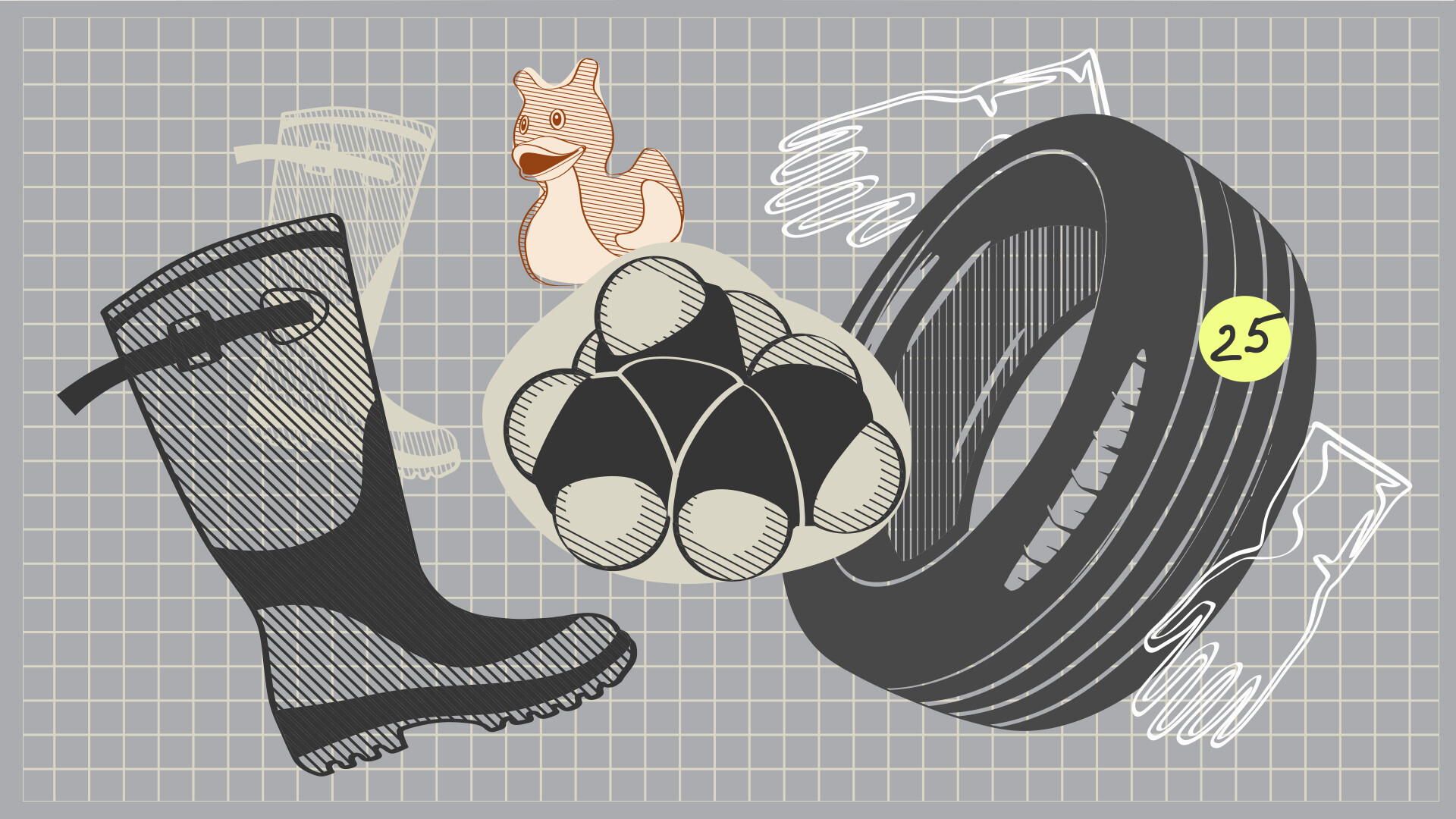
The rubber fever of the late 19th and early 20th centuries forced chemists to look for a substitute for the natural product. In 1900, chemist Sergei Lebedev was able to obtain isoprene, one of the bases for the production of artificial rubber and, in 1910, he created it from ethyl alcohol derivatives. At the same time, Boris Byzov developed the technology for production of butadiene synthetic rubber in the laboratory of the Triangle plant. In the mid-1920s, industrial production of synthetic rubber began and, in 1932, the world’s first plant for its production appeared in Yaroslavl. Today, this material is used for the production of tires, various seals and floor coverings.
Puppet animation originated thanks to… ballet. Alexander Shiryaev, the choreographer of the Mariinsky Theater, used puppets to work on the performance: he fixed them in stage poses and sketched them. The pictures were combined into many-meter-long ribbons and the image of the ballet production appeared on paper. Having bought a handheld camera in Europe, Shiryaev built a model of a theatrical stage, where he began to act out scenes from performances: on film, the figures came to life and moved in graceful ballet pas. That was how the choreographer became the creator of the first puppet films: even today, dance historians use them to recreate Mariinsky Theater productions of the period.
In 1906, Prince Boris Golitsyn, a member of the Special Commission on the Study of Seismic Activity, designed the first seismograph in history that converted mechanical vibrations into electricity. A wire frame placed in the field of a permanent magnet was attached to a pendulum. During an earthquake, the vibrations of the frame produced an electrical signal that was transmitted through wires to a galvanometer. The latter in turn made the pen vibrate, which then drew the seismogram on a roll of paper. This device made it possible to record even distant earthquakes. The first digital seismographs did not appear until the 1960s.
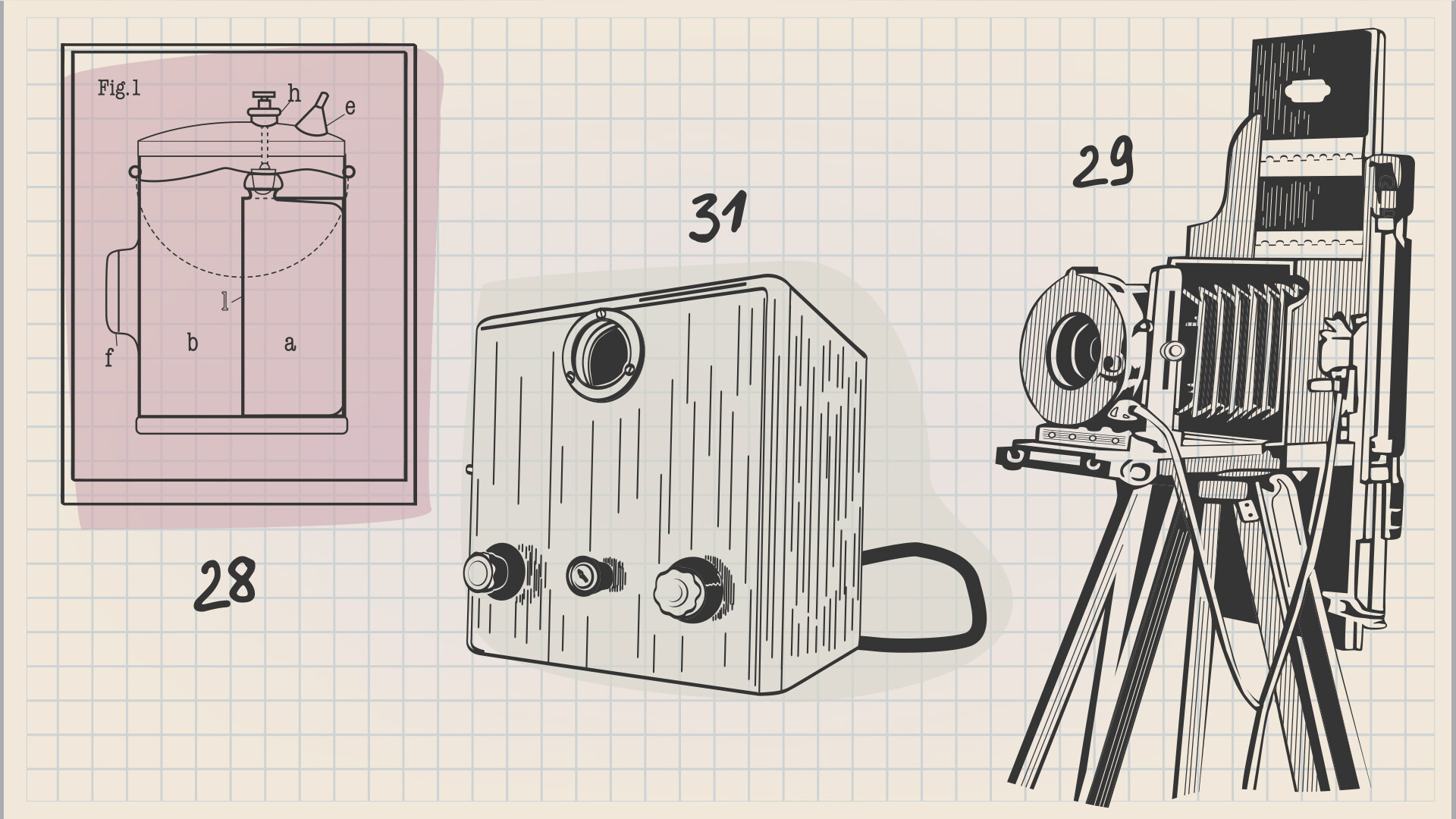
Alexander Laurent is said to have come up with the idea of taming fires this way when he stared at a beer mug with foam settling at the bottom. Although, most likely, he came up with the idea of a new way to extinguish fires after observing their consequences in the oil fields in Baku. In 1904, Laurent patented a compound of alkali and acid - sodium bicarbonate and aluminum sulfate, with the addition of various impurities, including licorice root. These were combined with water in a generator and created a foam. The solution was lighter than propellant and spread unhindered through the burning oil, literally cutting off its oxygen.
In 1902, photographer and researcher Sergei Prokudin-Gorsky went to Germany to study with Adolph Mitte. The course paid off: he created his own technology for making color transparencies. For this, the photographer used a triple exposure: the image was fixed on the plate through three filters - red, green and blue. The result was an amazingly bright picture.
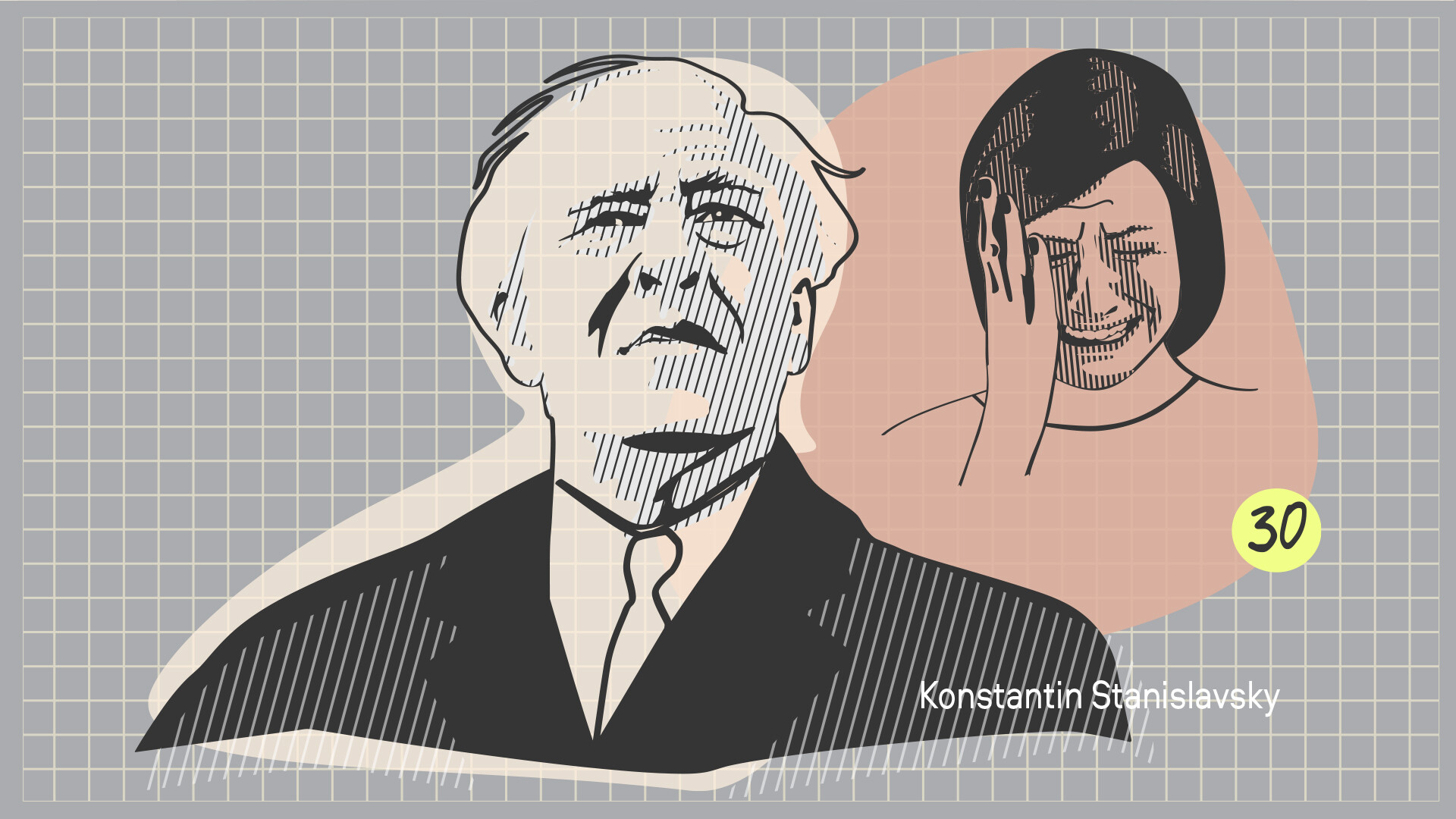
The method of acting technique developed by Russian director Konstantin Sergeyevich Stanislavsky has been inspiring actors all over the world to create striking memorable images, both on stage and on screen, for over a century. The system is based on three postulates: an actor must convey certain emotions unambiguously to the spectator, have his own experience or appeal to fantasy and genuinely experience the situation in which the character finds himself. For many years now, Hollywood actors Anthony Hopkins, Daniel Day-Lewis and Joaquin Phoenix have been adherents of Stanislavsky’s system. It was also the basis of the method developed by Lee Strasberg, Sanford Meisner and Stella Adler in the United States.
In 1899, Konstantin Persky presented a report in St. Petersburg on electrovisioning at a distance. A few years later, physicist Boris Rozing formulated the principle of “vision at a distance” through line-by-line transmission of images from the transmitting device to the receiving device with an electron-beam tube - a kinescope, which converted electrical signals into light signals. As early as 1928, scientists Boris Grabovsky and Ivan Belyansky first broadcast a moving picture. In 1931, almost at the same time, Semen Kataev in the USSR and Vladimir Zvorykin in the U.S. filed for a patent for a transmitting electron-beam tube, which reproduced color images.

During experiments with the propagation of electrical vibrations in the atmosphere, physicist Alexander Popov invented a device that could receive electromagnetic signals at a distance. He demonstrated the device on May 7, 1895, and transmitted a short message in Morse code. Popov believed that his invention would help capture electromagnetic waves in the atmosphere, but, in fact, he created the first radio receiver. Almost simultaneously with the Russian scientist, engineer Guglielmo Marconi developed a similar device.
The first professional motion picture camera is considered to be the ‘Cinematograph’, based on the Lumière brothers’ cam grapple with which they shot the famous ‘Arrival of a Train’. But, in 1893, two years before it appeared, a mechanic named Joseph Timchenko invented a worm-shaped jump mechanism, thanks to which the shots were intermittently changed. Together with inventor Moisei Freidenberg, they developed a kinetoscope, which used this “snail” device to take pictures on a disc photoplate. They managed to shoot two short films at the Odessa Hippodrome - the so-called “live pictures, driven by the electric machine”.
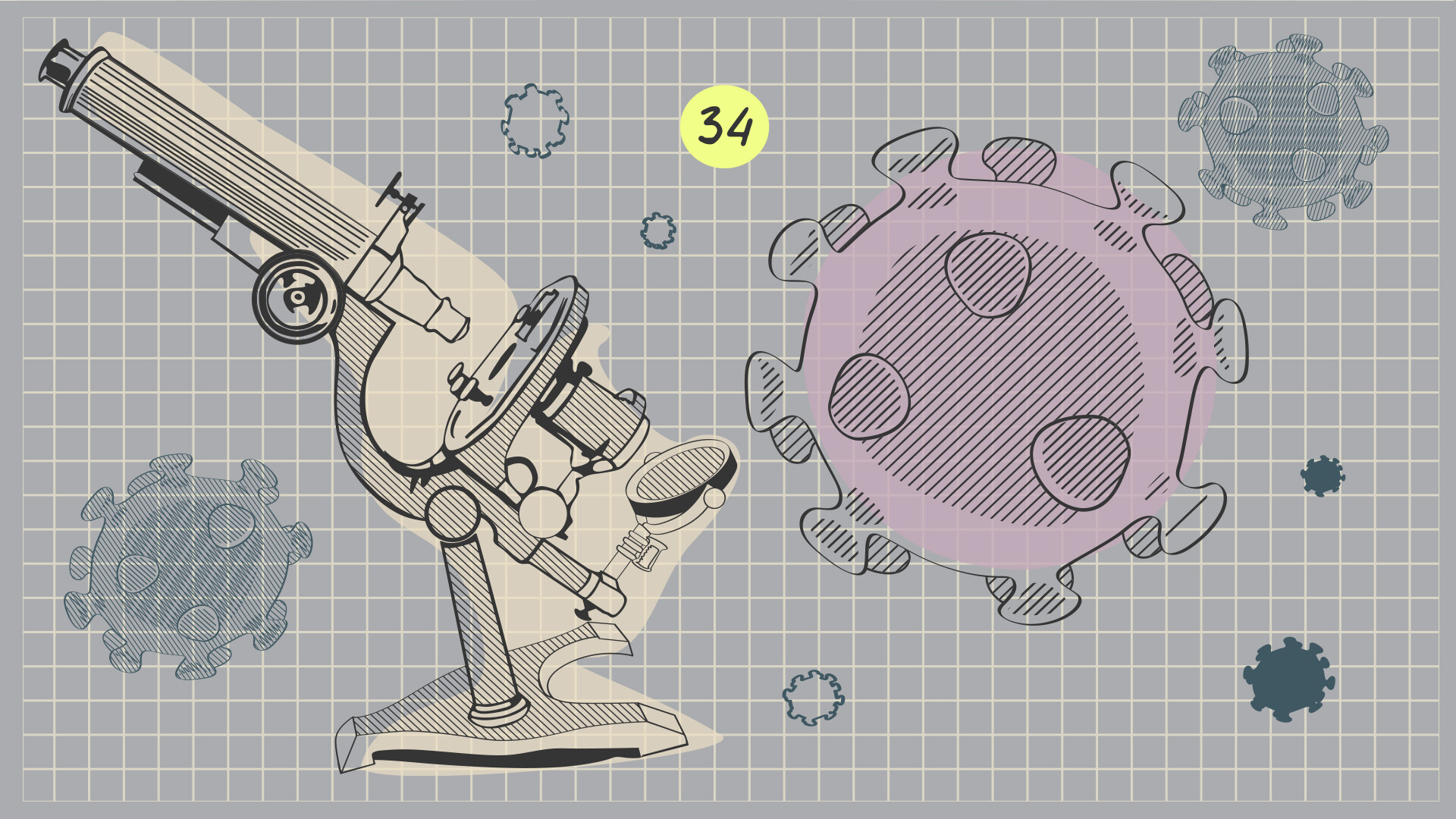
Botanist Dmitry Ivanovsky, doing research on the mosaic disease of tobacco in 1892, suggested that the culprits of the disease were bacteria and decided to isolate them by filtration. But, he discovered that, even after passing through a fine porous porcelain filter, the tobacco leaf extract was still contagious. Ivanovsky called the mini-microbes living contagious particles; in other words, he discovered the very first virus. Almost simultaneously with him, Dutch microbiologist Martin Willem Beyerink came to the same conclusions, also calling the new microorganisms viruses. Today, the detection of harmful microorganisms can prevent deadly diseases.
In 1889, Ippolit Romanov, the creator of the first Russian electric car, designed an electric omnibus. It seated 15 people, had a maximum speed of 11 kilometers per hour and a range of 60-70 kilometers. Test runs were even held in Gatchina and it seemed that everything was going to be done to put electric omnibuses on the road. The St. Petersburg Duma gave its permission, but Romanov did not manage to find any financing. The first electric buses never went into production. And, in 1906, the first electric bus line appeared in England.
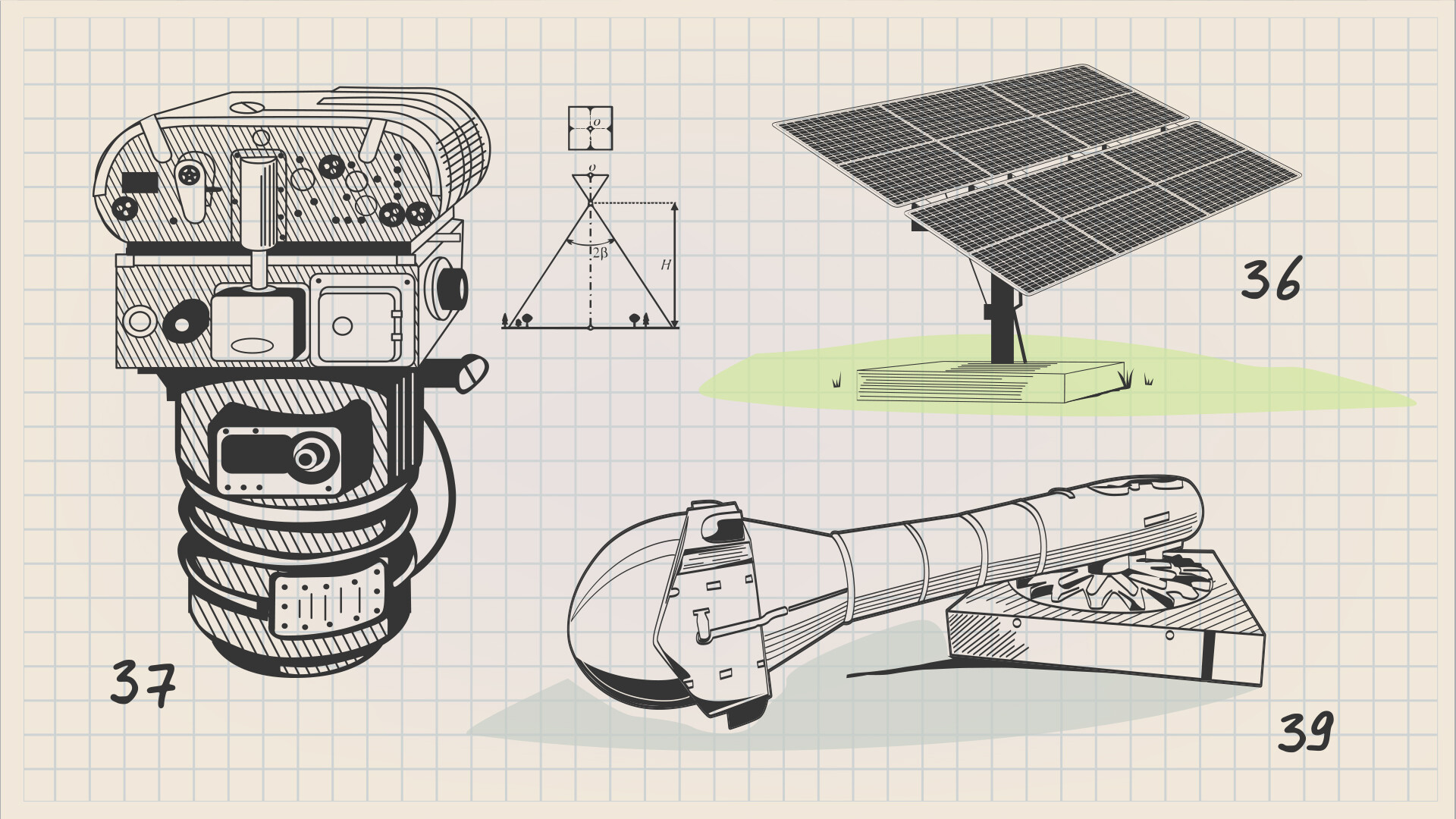
In 1888, Alexander Stoletov experimentally demonstrated how light affects electricity. In a glass cylinder filled with gas, he placed two electrodes - in the light as a result of the interaction of electrons from the cathode with gas atoms, a current appeared, the strength of which increased. Stoletov formulated three laws of photoelectric effect, and in 1905 Albert Einstein developed a theory, which explained them. Now photocells are used in solar panels and in smart home systems.
Sreznevsky’s aerial camera was the first specially adapted for taking pictures from the air. It was mounted on brackets with the lens downwards. To make a picture, it was necessary to insert a plate in a light-proof shell into a slot, from which it came out inside the camera. In 1886, the first photos were taken with this aerial camera. Nowadays, aerial photography is done with unmanned aerial vehicles.
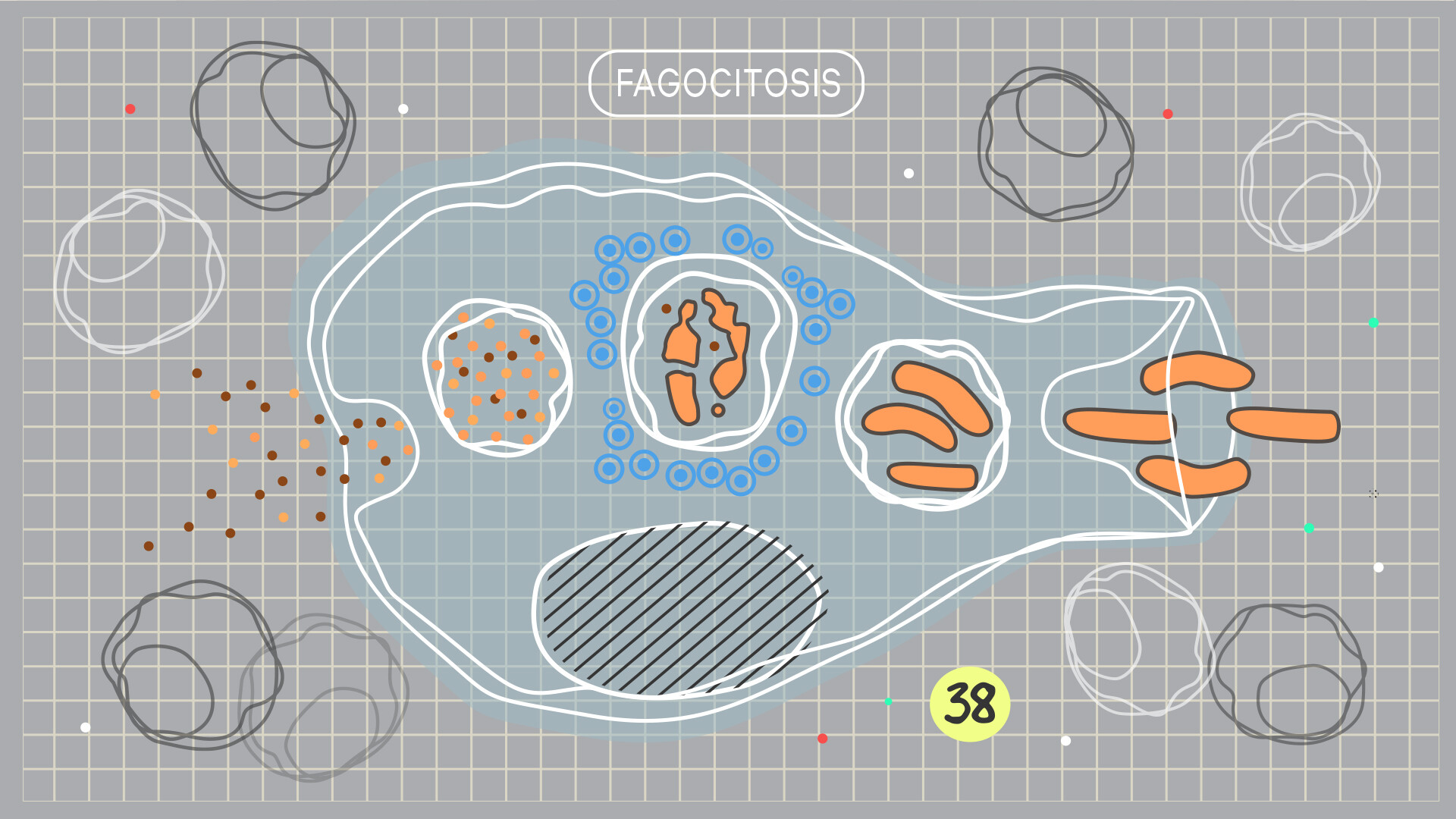
In 1909, the Nobel Prize in Physiology or Medicine was awarded to two scientists, Russian Ilya Mechnikov and German Paul Ehrlich. Both made crucial discoveries in the field of immunology. Ehrlich discovered antibodies - cells that form in the blood serum in response to aggressors. And Mechnikov identified phagocytic cells, which absorb foreign biological particles. This is how the human immune system protects the body from various kinds of pathogens. He called the discovery phagocytosis. Mechnikov presented his theory in 1883. He believed that disease is nothing but a confrontation between germs from the outside and phagocytes of the body, standing up for its defense. The discovery of phagocytosis actually explained how immunodeficiency diseases arise.
Fascinated by the idea of conquering the cosmos, Konstantin Tsiolkovsky began to develop machines capable of traveling to distant stars. The scientist believed that with the help of centrifugal force it was possible to lift a flying machine into the air. He designed the world’s first centrifugal machine (which became the prototype of the centrifuge): during experiments, he placed chickens and even cockroaches in it and increased their weight several times, studying how living organisms are affected by substantial overloading. And he foresaw that, when flying into space, during the launch and landing, a person will have to endure a significant increase in gravity.

Although the tram was put on wheels en masse in Germany, the Siemens firm was far behind Russian artilleryman-electric mechanic Fyodor Pyrotsky in this invention. He began his experiments with converting a horse-drawn carriage to electric traction as early as 1874 in St. Petersburg and, in 1875, he laid the first tram line, which was a little over a kilometer long. The current was brought along the rails through wagon wheels to an electric motor that sent the traction back to the wheels. The new mode of transport made a lot of noise, but remained more of an attraction for the public.
In 1874, Alexander Lodygin received a patent for a lamp with a carbon rod and, later, a carbon filament. After many years of experiments, he created a model that has survived to this day: a lamp with a tungsten filament. At the same time, Pavel Yablochkov was perfecting his own “Yablochkov candle”: in it, light was created by an electric arc between two insulated rods. His invention was brighter, but it was hotter and required more space. But, after the cheaper production of metal filament lamps at the beginning of the 20th century, Lodygin’s invention had a long, bright future.
By the time the ‘Periodic system of chemical elements’ appeared, 63 elements were known. Scientist Dmitri Mendeleev wrote off their names and properties on cards, compared the series of similar elements and, in early 1869, he calculated a unified system. On its basis, he discovered the fundamental Periodic Law: finding the elements in the periodic relationship to their atomic weight. Thanks to the periodic system, the existence of chemical elements unknown to science was also predicted and, later, put into place.
Where else could radiators for heating or, more simply, batteries have appeared, than in Russia, with its freezing winters? In 1855, Franz San Galli, owner of factories that produced equipment for heating and water supply, invented the ‘hot box’. The first batteries consisted of thick pipes with vertical discs in several tiers - a kind of heating “accordion”. San Galli’s invention was a success. He also came up with a Russian name for the device, the ‘batareika’ (‘battery’). Soon, the idea of the manufacturer was taken up in other countries and, today, radiators heat many houses around the world.
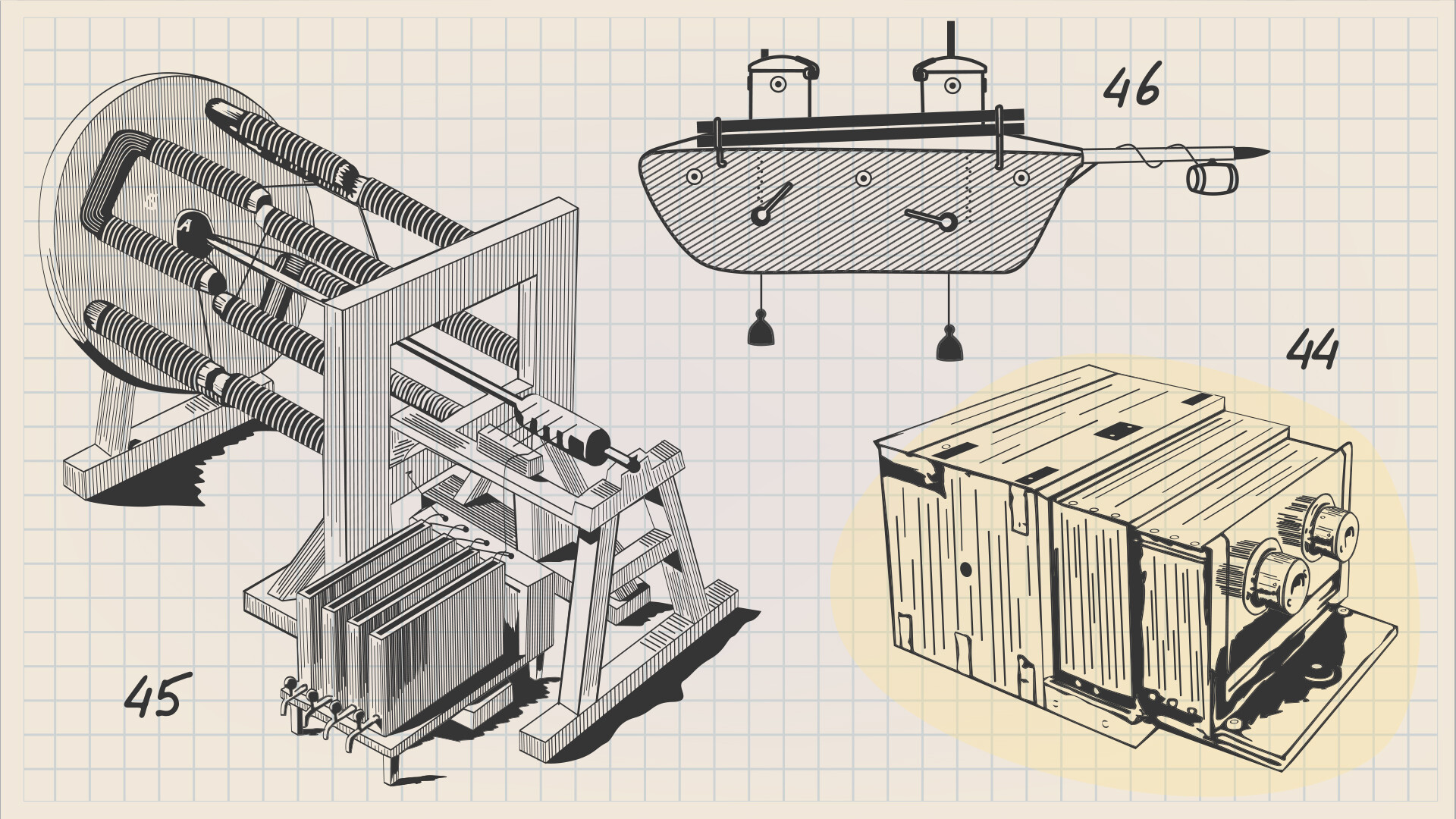
Painter Ivan Alexandrovsky was a passionate photographer. After visiting Europe, he began taking daguerreotypes, opened his own atelier and even became a court photographer. In 1852, Aleksandrovsky invented his own apparatus for shooting three-dimensional images and soon demonstrated the first stereo photographs to the public. The camera, in fact, was a box within a box: the inner box contained frosted glass, which provided sharpness, and a cassette with a plate. And it was photographed simultaneously through two lenses - resulting in a photographic stereo pair.
In November 1834, the Academy of Sciences of Paris received a communication from the physicist and inventor Boris Jacobi. In it, the scientist described the principle of the continuous rotary action of an electric motor. The device consisted of two disks with iron rods and a commutator on a galvanic battery. “The great-grandfather” of the modern DC electric motor lifted 4-5 kg per second by 30 cm, generating power of about 15 W. Jacobi’s device became the forefather of modern devices: there are electric motors in almost all household appliances, from refrigerators to fans.
Experiments with submarines were carried out in various countries literally as soon as it became possible to achieve at least a relative seal of the hull and to come up with a diving system. In 1834, engineer Karl Schilder built the first all-metal submarine, which allowed the crew to move at a depth of 10 meters for several hours. In 1865, the submarine Ivan Alexandrovsky became the first domestic submarine on a mechanical drive. Stepan Dzhevetsky’s subs, though quite small in size, in 1881, became the first mass-produced submarines in the Russian Navy.
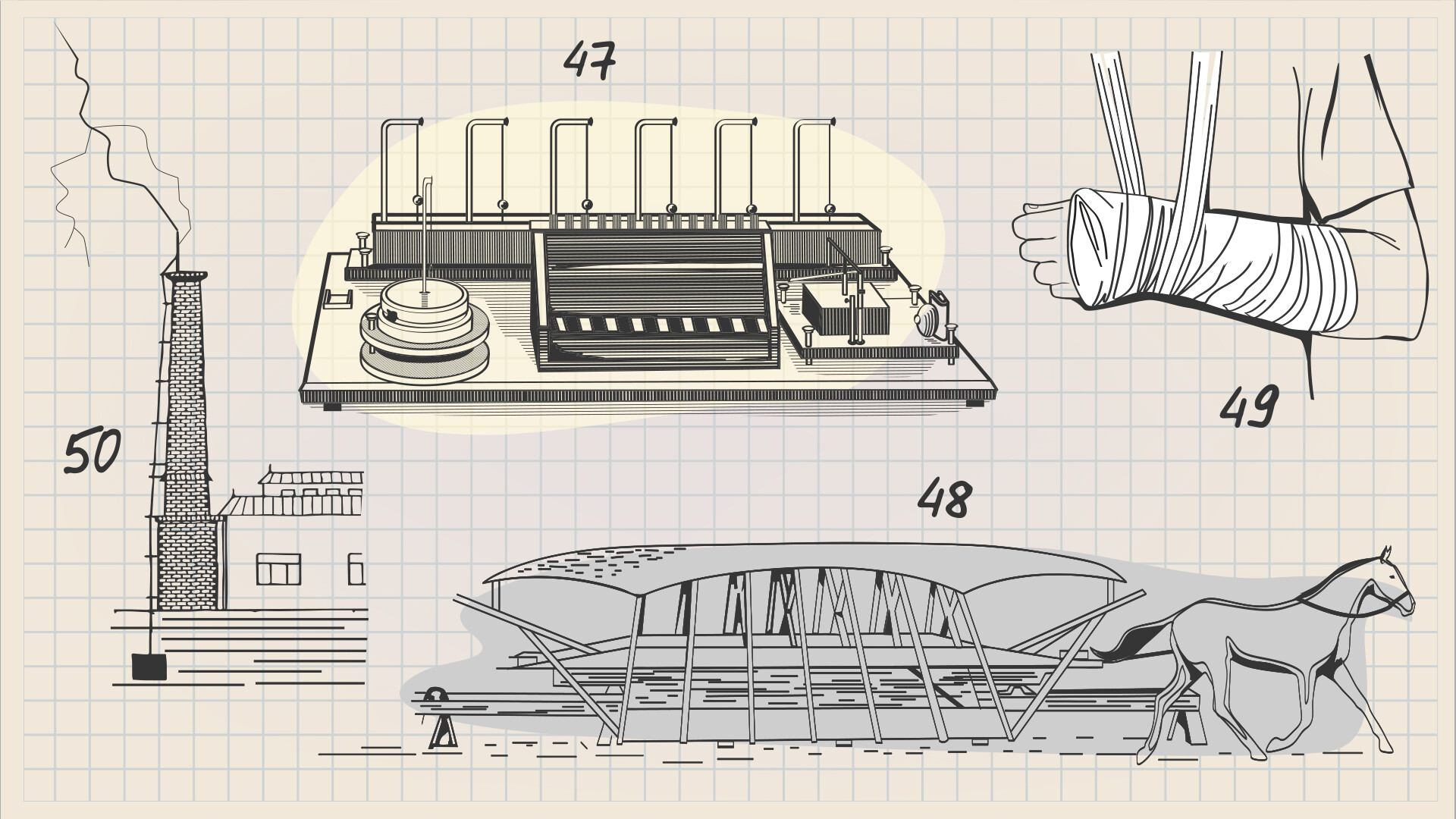
The first electromagnetic telegraph was created by scientist and diplomat Pavel Shilling in 1832. The technology was based on the effect of deflection of the magnetic pointer in interaction with the electromagnetic field. Schilling also developed a code in which each letter of the alphabet corresponded to a combination of symbols indicated by black and white circles on the telegraph machine. The first line was laid in the Winter Palace between the chancellery of Nicholas I and the reception rooms of the government offices. Schilling’s ideas were taken up by inventor Boris Yakobi: he invented a typewriter and a letterpress telegraph apparatus.
The village of Myachkovo near Moscow is considered the birthplace of the monorail. A local engineer named Ivan Elmanov invented the “road on poles”: a trolley car was moving on cast iron bars, laid on the poles, and it was, in turn, pulled by horses, moving on the ground. The inventor promised that a four-horse wagon could carry more than 26 tons of cargo in a day. A year later, in 1821, a similar device was patented in Great Britain by Henry Palmer and, in 1887, the monorail started operating in the U.S.
In ancient times, clay was used to fix broken bones. The Russian surgeon Carl Gibental in 1811 proposed fixing limbs with plaster: cloth was rubbed with a dry mixture and then moistened with water. This idea came to him thanks to his passion for sculpting. In 1843, the medic Vasily Basov placed a broken arm in a box with alabaster, which was suspended from the ceiling. But, the most effective was the method of Nikolay Pirogov: in 1852, he became the first to suggest putting bandages soaked in plaster solution. And, thus, he saved many patients, not only from incorrectly fused bones, but also from amputations. Such fixation bandages remain the most common way to treat fractures.
The lightning rod is believed to have been invented in 1752 by Benjamin Franklin, who created a device made of wire and a metal rod that would sink into the ground with one part and rise several meters above a house with the other. A year later in Russia, the first lightning rods were created by Mikhail Lomonosov. But there is a nuance! Back in 1725, a lightning rod appeared on the family tower of the Demidovs’ estate in Nevyansk. It was built by order of a goldsmith named Akinfy Demidov: either the workers took the initiative or he himself ordered it, but it is known that a metal spire with a weathervane was installed on the roof, which was attached to metal beams. And they were connected to frame rods going into the ground.
Dear readers,
Our website and social media accounts are under threat of being restricted or banned, due to the current circumstances. So, to keep up with our latest content, simply do the following:
If using any of Russia Beyond's content, partly or in full, always provide an active hyperlink to the original material.
Subscribe
to our newsletter!
Get the week's best stories straight to your inbox